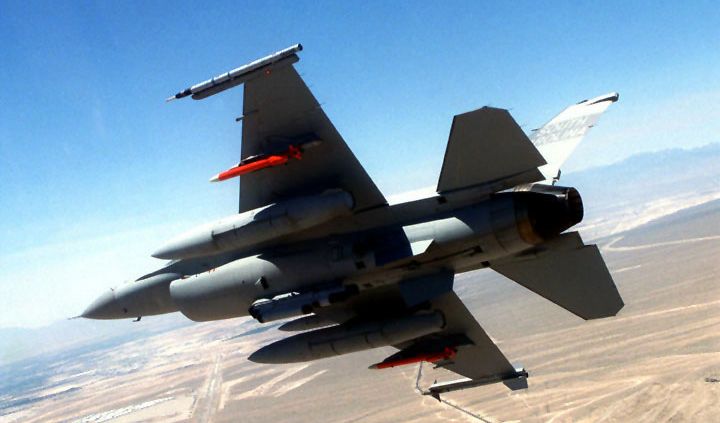“The twenty year occupation of Afghanistan by US and allied forces has been a disaster for those living in the country. At least a quarter of a million people, both combatants and civilians, have been killed, probably many more. Corruption is rife from the head of government down through the police, the army and courts. While the drug-rich warlords were kept on board by bribery, GDP per capita remained at less than $500 a year. Millions turned to drugs to escape reality. Whilst there have been some minor improvements in the position of urban women, those living in rural areas — the vast majority — face extreme poverty, threats of violence and war.
“. . . Over 100,000 Afghan troops, either pro government or pro-Taliban have lost their lives, while over 3,500 coalition soldiers and as many ‘contractors’ (privately hired combatants) have been killed. Tens of thousands of Afghan civilians have died.
“. . . the US government has spent over $2.2 trillion on the war. Half of this has been consumed by the Department of Defense. Unbelievably $530 billion has gone to the banks as interest payments on the money borrowed to pay for the war. This latter figure towers over that spent to train the Afghan Defence Forces ($100 billion) or spent on infrastructure projects, usually paid to Western contractors and NGOs ($144 billion). The US will pay for this war in the form of compensation and pensions for veterans and continued interest charges for many years ahead.”
– Rob Jones, As Taliban Take over and US Imperialism is Humiliated, Afghan Masses Pay the Price
Plenty of material has been published on the impact of the twenty-year US and NATO occupation of Afghanistan, but very little discusses the impact of militarism on climate. Most of the mainstream press is focussed on the political drama surrounding the US President and is even openly pro-war. Right-wingers are coping with their broken nationalism (liberals are right there with them), and left reformists are effusive with praise for President Biden.
Massive Profits from Occupation of Afghanistan and Iraq
The wealthy capitalists who own the oil industry and the US “defence” industry have made massive profits from the post-9/11 occupation of Afghanistan and Iraq – a “war on terror,” which has really been a war on people and climate. Trillions have been wasted producing arms, dwarfing money spent on transitioning to renewable energy while pumping absurd amounts of carbon into the atmosphere. We should also understand that the withdrawal from Afghanistan will not be the end of US militarism – Biden is not anti-war and should not be understood as such – the most likely scenario is that military forces will be deployed elsewhere in the next period and that the US ruling class could no longer strategically afford to keep them in Afghanistan. For socialists, an anti-war stance is crucial to fighting climate change. We must be vocal about the potential for a new war and none of us should fall under any illusions in Biden, like reformists and liberals have.
The withdrawal needs to be understood as a strategic move for the military and US imperialism, and not a principled anti-war move by Biden and the Democrats. Biden and the Democrats are architects of war and occupation; the threat of “metastasizing terrorism” (according to Biden) will be an excuse to fight more wars for oil and even water (according to VP Harris). The engine of US imperialism drives the processes of militarism, occupation and war – militarism being a key pillar propping up the expansion of capital, and it is the means by which one nationalistic group of capitalists maintain the upper hand over others.
Environmental Impact of Militarism Ignored
The environmental impact of US militarism is largely ignored by environmental organizations and international climate change conferences. The core of militarism’s environmental impacts is unrestricted use of fossil fuels with massive greenhouse gas emissions, and contamination of water, air and soil with chemicals and radioactive material. (In Iraq, military action has helped threaten desertification of up to 90 percent of Iraqi territory, devastating agriculture.)
While US imperialism currently has the most far-reaching and powerful military on the planet, this does not tell the whole story about militarism’s climate impact, globally. However, the information about US militarism is a yardstick for other countries’ military impact on climate change. Emissions data from the US military suggests that militarism is one of the biggest contributing factors to climate change, especially as a worldwide aggregate of all countries’ contributions. US militarism has by far the largest share in this, reflective of its position as the largest spender (accounting for 39 percent of global military spending; the runner up, China, only accounts for 13 percent of global spending).
“The US military machine is the world’s biggest institutional consumer of petroleum products and the world’s worst polluter of greenhouse gas emissions. Yet the Pentagon has a blanket exemption in all international climate agreements,” according to Sara Flounders, an anti-war activist and writer.
All of the US military apparatus – wars in Iraq and Afghanistan, operations in Pakistan, equipment at over 5,000 US bases globally (more than 800 abroad), NATO operations, aircraft carriers and jet aircraft, weapons testing/training/sales – none of this is included in US greenhouse gas emissions statistics and is not included in worldwide climate negotiations like the Paris Agreement. The US military is also exempt from most environmental legislation and Environmental Protection Agency interference.
Statistics in the 2005 CIA World Factbook claim that the United States Department of Defense (DOD) consumed more oil per day than the total consumption of most countries and would rank about 34th in the world, just between Iraq and Sweden. At the time, the DOD used 4.6 billion gallons of fuel annually, or an average of 12.6 million gallons of fuel per day. This does not include use by coalition forces, contractors, or weapons manufacturing.
Social science researchers from Durham University and Lancaster University determined more recently that:
“In 2017 alone, the US military purchased about 269,230 barrels of oil a day and emitted more than 25,000 kilotonnes CO2 equivalent by burning those fuels. In 2017 alone, the Air Force purchased $4.9 billion worth of fuel and the Navy $2.8 billion, followed by the Army at $947 million and Marines at $36 million.
“If the US military were a country, it would nestle between Peru and Portugal in the global league table of fuel purchasing, when comparing 2014 World Bank country liquid fuel consumption with 2015 US military liquid fuel consumption.
“For 2014, the scale of emissions is roughly equivalent to total — not just fuel — emissions from Romania. According to the DLA-E data obtained by the researchers, which includes GHG emissions from direct or stationary sources, indirect or mobile sources and electricity use, and other indirect, including upstream and downstream emissions.
“The Air Force is by far the largest emitter of GHG at more than 13,000 kt CO2e, almost double that of the US Navy’s 7,800 kt CO2e. In addition to using the most polluting types of fuel, the Air Force and Navy are also the largest purchasers of fuel.”
– Science Daily
In 2020, the United States consumed an average of about 18.19 million barrels of petroleum per day, or a total of about 6.66 billion barrels of petroleum annually, a slight drop from previous years due to the COVID-19 pandemic.
The US military is actually fully aware of its impact on the climate, but even though worsening climate change does pose a threat to these self-same military operations, there is no way for this issue to be resolved. There is a feedback loop here for profit for oil corporations: fight wars to secure more petroleum, to burn more petroleum…in wars for petroleum. A hideous web of weapons contracts with profit hungry “defence” companies (and other private interests) will ensure this contradiction is never resolved under capitalism, and it will ensure that more war and more pollution is imminent. The long occupations of Iraq and Afghanistan were a serious economic driver for some of the biggest capitalists.
The Method of Social Revolution
“The only way in which the proletariat can meet the imperialistic perplexity of capitalism is by opposing to it as a practical program of the day, the Socialist organization of the world economy.
“War is the method by which capitalism, at the climax of its development, seeks to solve its insoluble contradictions. To this method the proletariat must oppose its own method, the method of the Social Revolution.”
– Leon Trotsky, The War and the International
To fight climate change and attract new layers to a struggle for socialism, we must be vocally anti-war, out ahead of and leading up to the next conflict. A period of peace or relative peace will only be temporary and it actually lays the groundwork for the next period of war and occupation as competing imperial powers look for more profits. An anti-war/pro-climate position will help demarcate the differences between ISA and reformists, who have their illusions in nationalistic ruling class leaders and imperialistic manoeuvres. Loud opposition to the next period of war is as important to fighting climate change as fighting for investment in green technology or taking the biggest companies into democratic public ownership – all of these demands are actually linked. Militarist contributions to climate change are juicy, low-hanging fruit for socialists to organize around – to take a bite out of militarism is to take a bite out of climate change – but this is by no means an easy task. This is just one example of how different struggles against capitalism can be linked together. Only mass movements of people against the next periods of war and for a socialist reorganization of the world economy actually have any potential to stop ongoing militarism and related greenhouse gas emissions. Not only will mass movements be necessary, but workers’ control over production (starting with massive general strikes and workplace occupations) will be required to stop future wars.
Socialists must be ready to organize an anti-war/pro-climate movement. No war but class war!




